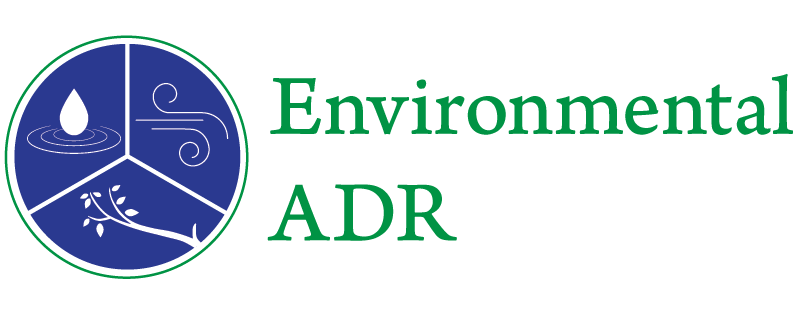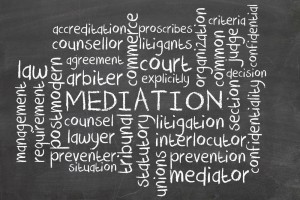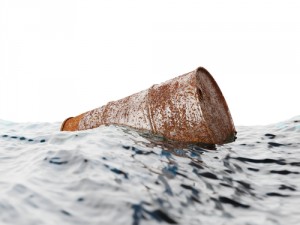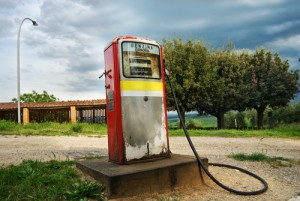 Call it “rough justice” if you prefer. This is yet another reason why many lawsuits are well suited to the mediation process. In environmental cases, for example, we cannot “rewind the tape” to see exactly when and how much of a particular contaminant was released into the environment, and by whom. Similarly, we cannot perfectly dissect the subsurface beneath our feet (like cutting a slice of birthday cake) and see the precise soil and groundwater pathways that a chemical release traveled over the course of months and years, vertically and horizontally. The best we can do is to drill for samples at various locations and depths where we expect the contamination to be found, to study the resulting evidence of the subsurface contours and the chemical concentrations found at each location. From this data we “reconstruct” what we believe most likely happened many months and years ago, where the chemicals were released and where they are now located, how we can most efficiently and cost effectively clean them up, and what will happen to the affected media if the problem is not corrected.
Call it “rough justice” if you prefer. This is yet another reason why many lawsuits are well suited to the mediation process. In environmental cases, for example, we cannot “rewind the tape” to see exactly when and how much of a particular contaminant was released into the environment, and by whom. Similarly, we cannot perfectly dissect the subsurface beneath our feet (like cutting a slice of birthday cake) and see the precise soil and groundwater pathways that a chemical release traveled over the course of months and years, vertically and horizontally. The best we can do is to drill for samples at various locations and depths where we expect the contamination to be found, to study the resulting evidence of the subsurface contours and the chemical concentrations found at each location. From this data we “reconstruct” what we believe most likely happened many months and years ago, where the chemicals were released and where they are now located, how we can most efficiently and cost effectively clean them up, and what will happen to the affected media if the problem is not corrected.
We cannot go back in time. Therefore, we must draw informed yet imperfect inferences from all the evidence we can find.
This is where environmental mediation comes in. With this data in hand, as evaluated by experienced professionals working for the disputants, we can vet the various studies presented though informed and professional debate. From these studies, peer review and discussion, we draw rational inferences from which we can answer the key legal and scientific questions presented, including: where is the contamination found and in what concentrations, what methods are available to clean it up it to required levels, at what cost and, ultimately, who should bear the costs and in what proportion. [Read more…]

 We live in a world of ever-growing concern about environmental harm to our health and well-being. As the science of detection improves, so does our awareness of large-scale releases of contaminants into the air, water and soil, which can affect large numbers of people and their property.
We live in a world of ever-growing concern about environmental harm to our health and well-being. As the science of detection improves, so does our awareness of large-scale releases of contaminants into the air, water and soil, which can affect large numbers of people and their property. A New York Times
A New York Times 
 There has been a lot of news recently about large-scale releases of contaminants into the air, water and soil, which have affected large numbers of people and their property. One such example is the discovery of high concentrations of lead in Flint, Michigan’s drinking water system. Another is the ongoing release in Southern California of large volumes of natural gas into the soils below the homes of residents living there. Other examples include the oceanic release of oil into the Gulf of Mexico, and the widespread property damage caused by hurricanes Sandy and Katrina to many thousands of people living in their paths.
There has been a lot of news recently about large-scale releases of contaminants into the air, water and soil, which have affected large numbers of people and their property. One such example is the discovery of high concentrations of lead in Flint, Michigan’s drinking water system. Another is the ongoing release in Southern California of large volumes of natural gas into the soils below the homes of residents living there. Other examples include the oceanic release of oil into the Gulf of Mexico, and the widespread property damage caused by hurricanes Sandy and Katrina to many thousands of people living in their paths. Just months before Rob Bilott made partner at Taft Stettinius & Hollister, he received a call on his direct line from a cattle farmer. The farmer, Wilbur Tennant of Parkersburg, W.Va., said that his cows were dying left and right. He believed that the DuPont chemical company, which until recently operated a site in Parkersburg that is more than 35 times the size of the Pentagon, was responsible. Tennant had tried to seek help locally, he said, but DuPont just about owned the entire town. He had been spurned not only by Parkersburg’s lawyers but also by its politicians, journalists, doctors and veterinarians. The farmer was angry and spoke in a heavy Appalachian accent. Bilott struggled to make sense of everything he was saying. He might have hung up had Tennant not blurted out the name of Bilott’s grandmother, Alma Holland White.
Just months before Rob Bilott made partner at Taft Stettinius & Hollister, he received a call on his direct line from a cattle farmer. The farmer, Wilbur Tennant of Parkersburg, W.Va., said that his cows were dying left and right. He believed that the DuPont chemical company, which until recently operated a site in Parkersburg that is more than 35 times the size of the Pentagon, was responsible. Tennant had tried to seek help locally, he said, but DuPont just about owned the entire town. He had been spurned not only by Parkersburg’s lawyers but also by its politicians, journalists, doctors and veterinarians. The farmer was angry and spoke in a heavy Appalachian accent. Bilott struggled to make sense of everything he was saying. He might have hung up had Tennant not blurted out the name of Bilott’s grandmother, Alma Holland White. I’d like to put some meat on the bones of the cost-saving aspects of environmental mediation. I have argued that environmental mediation, properly executed, provides the opportunity to eliminate costs of duplicate work by multiple parties, while preserving every party’s right to negotiate hard on the merits of the dispute and to reach an agreed-upon allocation of the costs of dealing with the contamination at issue. In this blog, I present a hypothetical situation – based on successful mediations I have conducted – to help the reader understand why I say this.
I’d like to put some meat on the bones of the cost-saving aspects of environmental mediation. I have argued that environmental mediation, properly executed, provides the opportunity to eliminate costs of duplicate work by multiple parties, while preserving every party’s right to negotiate hard on the merits of the dispute and to reach an agreed-upon allocation of the costs of dealing with the contamination at issue. In this blog, I present a hypothetical situation – based on successful mediations I have conducted – to help the reader understand why I say this. I created this website to discuss real life examples of why environmental mediation really works. It is not a “how to” site. There are thousands of those out there. It’s more of a “why” or, more accurately, a “why not” site. It is focused particularly on why environmental mediation fits so well into and is consistent with the aims of maintaining and cleaning up our environment, our waters, air and soil.
I created this website to discuss real life examples of why environmental mediation really works. It is not a “how to” site. There are thousands of those out there. It’s more of a “why” or, more accurately, a “why not” site. It is focused particularly on why environmental mediation fits so well into and is consistent with the aims of maintaining and cleaning up our environment, our waters, air and soil.
